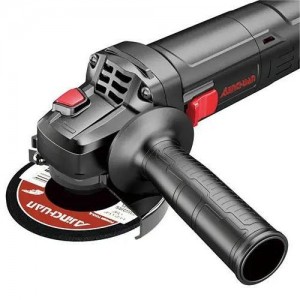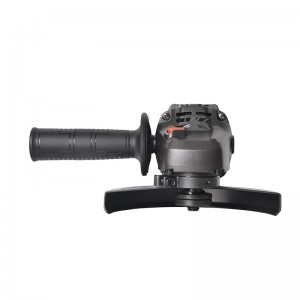In the field of woodworking, the Angle grinder is an indispensable tool, widely used for cutting, sanding and finishing wood. However, when using an Angle grinder, excessively high rotational speed may cause the wood to burn, affecting the processing quality and the integrity of the wood. Therefore, understanding and mastering the critical speed of the variable-speed Angle grinder specifically designed for woodworking is crucial for enhancing work efficiency and protecting wood. This article will detail how to prevent wood burning and ensure the smooth progress of the processing by reasonably controlling the rotational speed of the Angle grinder.
First, the working principle of the Angle grinder
The Angle grinder processes materials through high-speed rotating grinding discs or cutting discs. Its working principle is based on the motor driving the grinding disc or cutting disc to rotate, generating high-speed cutting force, thereby achieving the cutting, grinding or finishing of materials. In woodworking processing, Angle grinders are typically used for operations such as surface grinding, corner trimming and slotting of wood.
Second, the causes of wood burns
1. Excessive rotational speed
The excessively high rotational speed of the Angle grinder is one of the main reasons for the burning of wood. Excessively high rotational speed will intensify the friction between the grinding disc and the wood, generating a large amount of heat. If this heat cannot be dissipated in time, it will cause the surface temperature of the wood to rise and even burn.
2. Improper selection of grinding discs
The material and particle size of the grinding discs will also affect the processing effect. If the particle size of the grinding disc is too fine or the material is not suitable for wood processing, it may increase the friction, cause heat accumulation, and thus burn the wood.
3. Improper operation
Improper operation is also a common cause of wood burning. For instance, grinding or cutting at the same position for a long time, or applying excessive pressure, can lead to heat accumulation and increase the risk of wood burning.
Third, the determination of critical speed
1. Experimental method
To determine the critical speed of the variable-speed Angle grinder specifically designed for woodworking, it can be tested through experimental methods. Choose different rotational speeds to grind or cut the same piece of wood, and observe the temperature changes and burning conditions on the surface of the wood. Record the processing effects at different rotational speeds and find the highest rotational speed that does not burn the wood.
2. Theoretical calculation
Theoretical calculations can be carried out based on the power of the Angle grinder, the diameter of the grinding discs and the thermal conductivity coefficient of the wood. By calculating the frictional heat between the grinding disc and the wood and the heat dissipation capacity of the wood, the critical rotational speed that does not burn the wood is determined.
3. Practical Application
In practical applications, it is recommended to select an appropriate rotational speed based on the type of wood and processing requirements. Generally speaking, the critical speed of softwood is relatively low, while that of hardwood is relatively high. Meanwhile, adjust the rotational speed appropriately according to the different processing tasks to ensure the processing effect and the integrity of the wood.
Fourth, measures to prevent wood from being burned
1. Select the rotational speed reasonably
Based on the experimental and theoretical calculation results, the rotational speed of the Angle grinder should be reasonably selected. When processing softwood, it is recommended to use a lower rotational speed. When processing hard wood, the rotational speed can be appropriately increased, but it should not exceed the critical speed.
2. Select the appropriate grinding discs
Select grinding discs suitable for wood processing and ensure that the material and particle size of the grinding discs are appropriate for the processing task. Avoid using overly fine or coarse grinding discs to reduce friction and heat generation.
3. Operate correctly
When operating an Angle grinder, avoid grinding or cutting at the same position for a long time. Move the processing position appropriately to avoid heat accumulation. At the same time, avoid applying excessive pressure to reduce friction and heat generation.
4. Cooling measures
During the processing, cooling measures can be taken, such as using coolant or air cooling, to help dissipate heat and prevent the wood from being burned.

By reasonably controlling the rotational speed of the Angle grinder, choosing the appropriate grinding discs, operating correctly and taking cooling measures, the burning of wood can be effectively prevented, and the processing quality and efficiency can be improved. It is hoped that the introduction in this article can help you better understand the critical speed of the special variable speed Angle grinder for woodworking and provide reference and assistance for your woodworking processing.
Post time: May-21-2025

